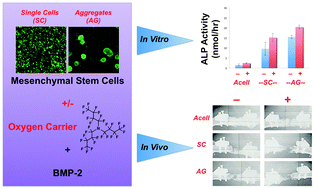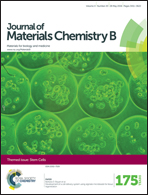Environmental manipulation to promote stem cell survival in vivo: use of aggregation, oxygen carrier, and BMP-2 co-delivery strategies
Abstract
While mesenchymal stem cell (MSC)-based strategies for critically-sized bone defect repair hold promise, poor cell survival in vivo remains a significant barrier to the translation of these therapeutics. One method employed to extend the survival of MSCs is the formation of three-dimensional aggregates, a strategy which modulates the immunomodulatory secretome of the cells, thereby influencing the local inflammatory environment and potentially bone tissue repair. Enrichment of cell-seeded hydrogels with oxygen carriers to counter the hypoxic conditions encountered in vivo or co-delivery of cells with growth factors, are also strategies employed to modulate the cell micro-environment. In this study, we examined the effect of human MSC (hMSC) and rat MSC (rMSC) aggregation on cell survival and bone tissue regeneration within both immunocompromised (nude) and syngeneic (Lewis) rat models. Despite a heightened release of paracrine factors from stem cell aggregates in vitro, the delivery of hMSC or rMSC aggregates in their respective rat models had no beneficial impact on cell survival, construct vascularization, or critically-sized bone defect repair. Co-delivery of oxygen carrier perfluorotributylamine (PFTBA) within the alginate hydrogel delivery vehicle impeded in vivo bone regeneration in both MSC-seeded and acellular constructs. Although rMSC seeding was observed to enhance the osteoinductive potential of bone morphogenetic protein 2 (BMP-2)-containing constructs in vitro, co-delivery of rMSC and BMP-2 to the femoral defect space attenuated bone repair in vivo compared to BMP-2 delivery alone. Overall, despite in vitro evidence to the contrary, the present study observed no beneficial effects of these delivery strategies on cell-based bone tissue repair.

- This article is part of the themed collection: Stem Cells

 Please wait while we load your content...
Please wait while we load your content...